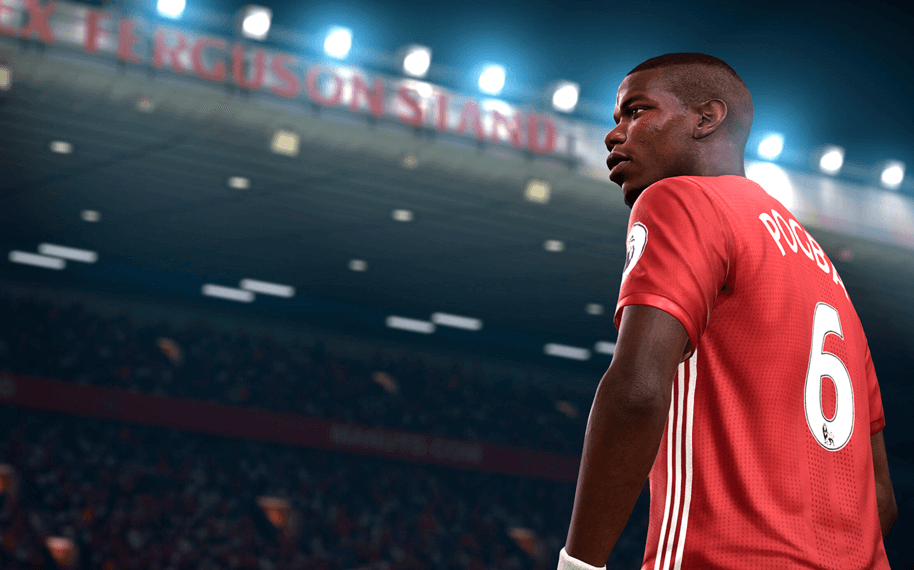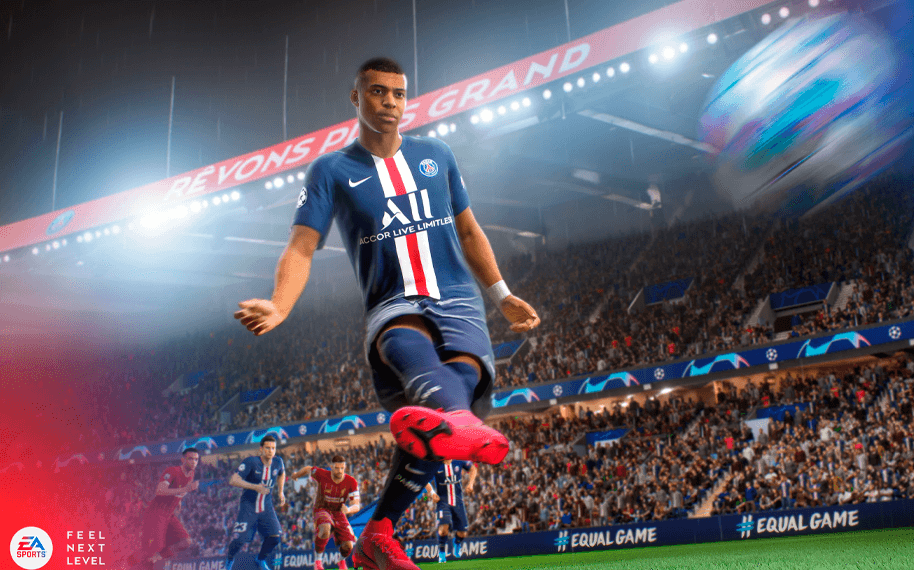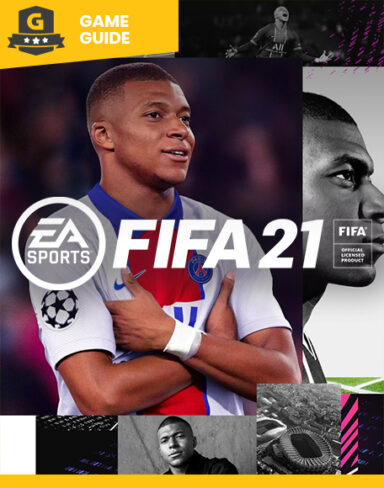Regardless if you’re a hardcore fan of the game (physical or otherwise), want to play as your favorite players out on the field, or even if you’re just keen on picking up a new game to try out with some friends, there are things to enjoy in FIFA for everyone. And while there may not be too many changes over the years, there are some subtle variations in mechanics between iterations that will take even the most seasoned veterans some elbow grease to master.
Much like an actual game of soccer, there’s no surefire way to cheat the system on a technical level. Add on some strategy to that and you may find an extra depth to the game that may prove to be a challenge. Needless to say, there is a learning curve to these things, and we’re here to give you that little push you need to make your virtual drills as positively effective as can be before you go out into the field.
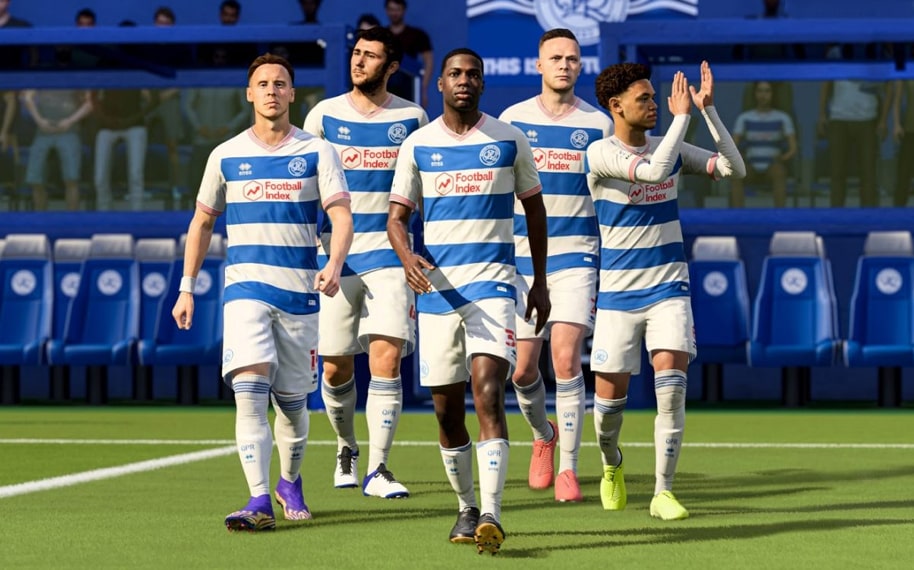
Stamina Management
Let’s start off with stamina management. For those of you who didn’t know, a real life soccer match is at least 90 minutes long. Of course, things don’t feel quite the same within a virtual platform. However, stamina loss is still a very real mechanic in FIFA. While it may not be immediately obvious, given that your players move the ball around faster, get into position quicker, and make more fast-paced plays overall, there are certain caveats to keeping that Sprint button held down throughout the entire game.
Firstly, it wears your players out, forcing them into such poor physical conditions that they basically move at a snail’s pace and eventually have to be subbed out by your second-, or even third-string players. Secondly, not only are they going to be moving slower, their proficiency takes a huge dip too. This means that they are more likely to miss shots, lose passes, have lower ball control, and so on. Ergo, this should be your first takeaway: Sprint as you need, not as you please. You don’t expect real players to play at 100% for the whole 90 minutes of an actual game, and neither should you expect it from your virtual players.
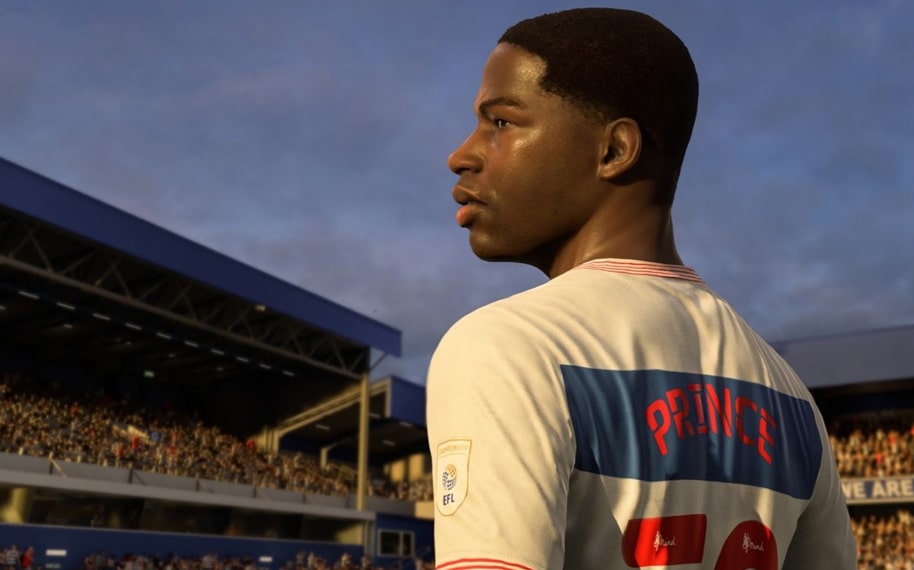
Defensive Play
Next up, defense. And this doesn’t get said often enough. While it’s true that to win games you need to score goals, it’s arguably just as important that you don’t get scored on either. Many players adopt almost purely offensive strategies that any semblance of a defensive plan is practically negligible, so having one will do you more harm than good when competing with other people. Being able to limit your opponent’s movements while they’re on the offensive, boxing them in and keeping their shooting angles tight will make it a lot easier for you to eventually seize the ball from them and turn things around. Boring as it may sound, a good player should know when to stand back and hold the fort, not just how to seize an opportunity to score.

Essential Drills
With FIFA 2021, new features called Agile Dribbling and Creative Runs were introduced. These two new movement options are designed to give you a much greater control of how your players are positioned and how you want them to move about. With Agile Dribbling, when your player has possession of the ball, he will dribble it at a slightly slower pace, but with much greater control of the ball as it stays closer to the player’s body. Naturally, with a higher dribbling stat, your player will display a higher level of dexterity and finesse with the ball. But regardless, you should still make it a habit to use this skill whenever you’re trying to get past the opposing team’s defenders. And it should come as no surprise to you that you should pair this with effective Sprinting so as to get as close to scoring as possible as quickly as possible without losing possession of the ball.
Creative Runs, on the other hand, involve a little more pre-planning. What it does is that it allows you to tell your other players to move in a specific direction, and how fast you want them to be moving. You can use it to set up formations for a quick play, create opportunities to score, get another player into a good position to receive a pass, and so on and so forth. Granted, this is going to be one of the tougher tricks to get used to and master, but once you do, you will be able to move your players as though they are a single unit. This definitely takes away the element of chance from previous renditions of FIFA where you have to rely on the game’s AI to figure out what you want to do and get players into position for you. Teamwork makes the dream work, as it were.
Like real players in a match, it’s always good to work on some of your technical skills with the controls. Those of you familiar with FIFA may already have knowledge of the skill sets we’ll be talking about, but then again, no harm in getting a refresher course. Now, imagine this. You’re penetrating deep into the opponent’s defenses and the goal is almost within reach. However, you’ve gotten way too far ahead and are now boxed in. Your other players are not in any viable position to receive a pass. At least, not a conventional one. In such a situation, you may find yourself going for a lob pass instead. After all, if you’d pass straight, you may as well be handing the ball over to the opposing team. Learning to weigh your different passing options and making the one most likely to succeed in tough situations will greatly improve your overall control of the ball and lower your chance of getting it stolen by the enemy team.
And in a similar manner, understanding and utilizing the different shooting options available to you will help to create more opportunities to score. Should you go for a low shot? Or maybe a curved shot would be better? There are numerous ways to get your ball past the goalie. The standard power shot will have you sending the ball far and high depending on how much power you put into it. Not the hardest to block, but ideal when you’re in a position to force it through with raw strength. The finesse shot has the ball curving towards the goal at an angle and is ideal for setting up headers. The low-driven shot sends the ball forward low and fast; good for when you’re already in the penalty box. And the infamous chip shot lobs the ball over the goalie’s head and dips just behind them, making its way into the back of the net. Needless to say, mastering these shots will undoubtedly take some degree of effort and time. If it does feel too much for you, we suggest sticking to a few each match and getting things down to muscle memory before moving onto the next.
At the same time, you should also spend a few sessions with the Skill Games and Set Pieces to really break in those key combinations. Skill Games are, simply put, the tutorials of the game, and cover everything from shooting, passing, dribbling, and so on. Set Pieces are a little more refined, providing you with a replication of certain scenarios you will eventually find yourself in such as throw-ins, corner kicks, free throws and penalty kicks. These tutorials are not just meant to teach you how to make the right shot or movement, but also when you should be making them.

Standing your ground
For those of you a little more familiar with the mechanics of the game, let’s go into some of the slightly more nuanced controls of the game. First up, jockeying. In case you didn’t know, jockeying allows your active player to strafe quickly and change directions without losing too much momentum while still keeping the pressure on the forward. Needless to say, this is an essential skill to pick up and should be used whenever you’re on the defensive. Jockeying will help you to limit your opponent’s actions by limiting their effective range and put you in a better position to intercept and steal the ball.
For more coordinated defensive plays, teammate pressing is always an option. Teammate pressing generally involves getting help from another player to contain and restrain your opponent’s actions. This also makes it one of the more situational skills, as a section of your defense will be left virtually unguarded in order for you to fortify the other section. It’s up to you when to use it, but the benefits of boxing the opponent in shouldn’t be ignored.
Suppose you have possession of the ball. However, you don’t see any viable course to take. If you find yourself in such an instance, you can give yourself a breather by shielding the ball. Shielding allows you to buy time, and can be useful if you’re waiting for teammates to get into position for a play, or even if you’re just waiting for the whistle signaling the end of the match.
Outside of these general defensive plays, you should hone your own individual blocking techniques as well. It shouldn’t come as a surprise in FIFA that you will find yourself standing in front of your opponent’s shot or pass trajectory. Boxing your opponent in and restricting that trajectory is one thing, but you should also know where you should be moving in order to shut it out completely, and when you should be playing more offensively to take possession away from the opponent. Tackling can be a risky move, especially if you’re in the penalty box, but proper maneuvering and timing will allow you to block and steal the ball in a single stroke.

Offensive Techniques
Aside from jockeying and waiting to intercept a pass or shot, you are also free to take the offensive to your opponent. If you ever find yourself running shoulder to shoulder with the player holding the ball, you will often see the two of them try to push one another off. If your player has high aggression and strength and succeeds in pushing the other one away, then great. However, do be aware that a foul can sometimes be called whenever players are colliding shoulder to shoulder. In such instances, there is actually a less risky way to take possession away from your opponent. Using the tackle button, you can actually attempt to pull the opponent back by his jersey. This will consequently slow him down, allowing you to take the ball without having to get too aggressive.
Lastly, for an offensive approach, make use of team pressing. This will make your whole team rush forward to the opponent’s side of the field for an all-out attack. Naturally, this will leave a lot of open space in your half. Thus, this is best used as a Hail Mary when you’re behind in terms of the score and don’t have a lot of time left on the clock. The benefits of going 100% on the offensive is that you put a lot of pressure on your opponent. If they’re already ahead in score, then they will likely try to secure the advantage and draw out the match until the final whistle. By applying constant pressure, your opponents are more likely to trip up and give you a chance which you can exploit to possibly turn the match around. The drawback for this is that it obviously tires your players out faster, and we all know how exhausted players will have an adverse effect on the match.
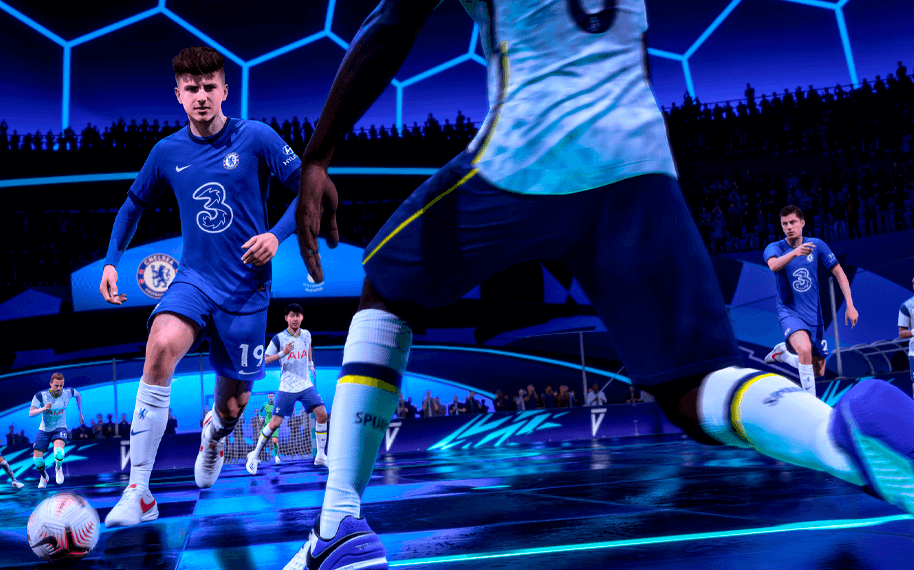
Tips and Tricks
FIFA is a highly competitive game, and that’s arguably where you’ll find the most enjoyment out of. There is no greater satisfaction than getting a come-from-behind win against a skilled opponent, and with changing metas and a myriad of different team combinations and formations, there’s always going to be a reason to pick up a few neat tricks, both on the field and off.
In our last sections, we’ve largely covered the things you should do on the field or in an actual match. However, we all know that FIFA is much more than that. Outside of matches and the football mechanics of the game, there is also team management as well as individual player development to think about. Here are some pointers you may want to keep in mind the next time you’re in the game.
Headers and crosses
With FIFA 2021, headers have become much easier to achieve, making it a viable play to make. With an adequately tall player in the right position, a well-placed cross will give you enough room to get that sweet bonk in. If you were coming from the previous FIFA and aren’t used to making headers an option to score, now is as good a time as any to start training for it.
Tricks aren’t just for show
While getting a ball deep into the enemy’s defenses is vital to scoring a goal, it also limits your options with the ball. And with the opposing defenders closing in on you, there is little time to make any excessive maneuvers without losing possession. In such situations, utilizing one of the many dribbling tricks that’s available to you can sometimes help create openings, believe it or not. The element of surprise is key here, as players don’t always expect their opponents to use tricks when things get dicey. Use that to your advantage and fool the other player into committing to a challenge as you make a masterful maneuver of the ball around their attempts to take it from you. Not only does it scream ‘style’, it can be effective as well.
Rake it in with the FUT Squad Building Challenges
Squad Building Challenges in FIFA are essentially challenge missions for you to build unique Squads consisting of various players. After which, you can submit your Squads in order to get rewards. Granted, you’re not always guaranteed to get a reward, but over time, you’re more likely to earn a profit than not. And for those of you who want to chase after the optimal cost-reward ratio, you can check out platforms such as Futbin, a community powered site that offers some of the cheapest solutions to completing both the simple and more advanced SBCs.
Make easy money with Squad Battles
Being challenged is always fun, but being always challenged can be taxing on the mind. Sure, Division Battles help keep you on your toes by pitting you against players of a similar skill tier. However, if you expect to always come out on top, you’re going to have a hard time coping. Squad Battles, on the other hand, gives you a decent amount of points for your weekly rankings, while still letting you earn some coins for wins, even at lower difficulties. So if you’re tired of getting wound up every match or if you’re looking to play at a more relaxing pace, feel free to give them a go.
Master the free kick in Set Pieces
We’ve briefly talked about Set Pieces in one of the earlier sections of this article, and one of the most important skills to get down, especially if you’re new, is arguably the free kick. It’s easy to screw up on the power and direction if you’re unfamiliar with the controls. To mitigate that, we recommend completing all the basic and advanced Set Pieces for free kicks within the Skill Games. Gaining mastery over how to shoot will undoubtedly take your offensive potential to the next level, but other than that, it opens you up to make a range of different shots depending on the situation.
Find your underdogs
We all know the big names, and we all know how well they perform on the field. However, that fame comes with a very steep price tag. If you’re looking to transfer over some high-profile players in order to build your Ultimate Team, be prepared to fork over a sizable amount of coins for them. Like all marketplaces, the Transfer Market is home to not only the Mbappes, Gullits and Ronaldos, it also has some very high potential players that aren’t nearly half as expensive as the top dogs. Take the time to go through leagues outside of the mainstream choices such as Ligue 1 or the Chinese Super League, and you may find yourself a pleasant surprise. Make use of Player Links (measured by players’ common traits between their nationality, club and league) and Chemistry to build unique teams with players across the world. Not to mention, winning is more about practice than it is about buying strong players. Take our word for it.
Understand what formations suit your play style
Whether it’s a standard formation like the 4-4-2, or one of the more niche choices like the 3-5-2, formations play a certain role in managing your players in an actual match. Before you go into the nitty gritty of each formation’s strengths and weaknesses, you should first be aware of what kind of player you are. If you think you’re more of an aggressive player and would like to take a more offensive stance in the match, you may want to go for something like the 4-2-4 formation. And if slow and steady wins the race for you, 5-2-2-1 may be a better choice instead. The possibilities are almost endless, and you may want to not only hone your proficiency with the formations and the team itself, but also take some time to study the meta and see which formation best fits how you play the game.



